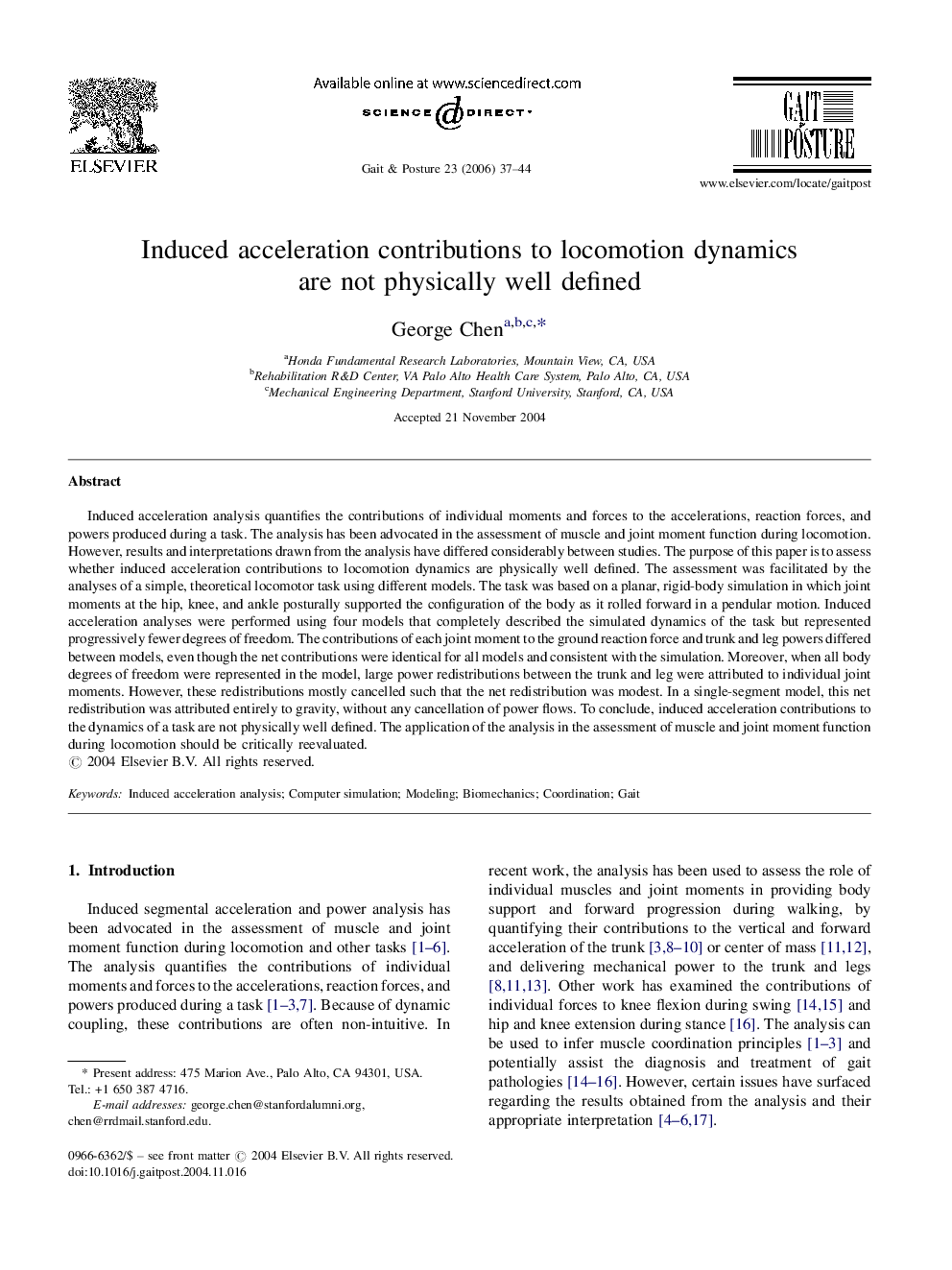| Article ID | Journal | Published Year | Pages | File Type |
|---|---|---|---|---|
| 4058566 | Gait & Posture | 2006 | 8 Pages |
Induced acceleration analysis quantifies the contributions of individual moments and forces to the accelerations, reaction forces, and powers produced during a task. The analysis has been advocated in the assessment of muscle and joint moment function during locomotion. However, results and interpretations drawn from the analysis have differed considerably between studies. The purpose of this paper is to assess whether induced acceleration contributions to locomotion dynamics are physically well defined. The assessment was facilitated by the analyses of a simple, theoretical locomotor task using different models. The task was based on a planar, rigid-body simulation in which joint moments at the hip, knee, and ankle posturally supported the configuration of the body as it rolled forward in a pendular motion. Induced acceleration analyses were performed using four models that completely described the simulated dynamics of the task but represented progressively fewer degrees of freedom. The contributions of each joint moment to the ground reaction force and trunk and leg powers differed between models, even though the net contributions were identical for all models and consistent with the simulation. Moreover, when all body degrees of freedom were represented in the model, large power redistributions between the trunk and leg were attributed to individual joint moments. However, these redistributions mostly cancelled such that the net redistribution was modest. In a single-segment model, this net redistribution was attributed entirely to gravity, without any cancellation of power flows. To conclude, induced acceleration contributions to the dynamics of a task are not physically well defined. The application of the analysis in the assessment of muscle and joint moment function during locomotion should be critically reevaluated.
